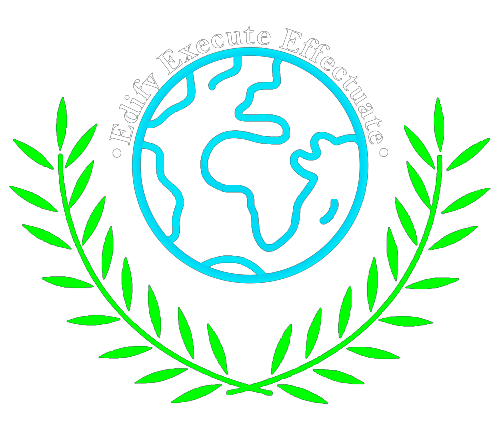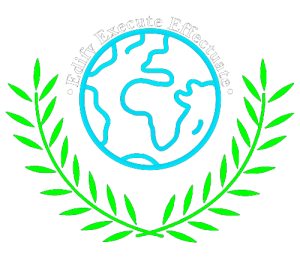By Anuradha Kakati
Introduction
Europe’s immigration crisis has been a defining issue for the continent over the past decade. The influx of refugees and migrants, primarily from Africa, the Middle East, and Asia, has highlighted both humanitarian imperatives and political tensions. This blog explores the complexities of Europe’s immigration crisis, presenting recent facts, contemporary examples, personal stories, and discussing potential solutions.
The Scale of the Crisis
The European migration crisis reached its peak in 2015 when over a million refugees and migrants crossed into Europe, fleeing conflicts in Syria, Afghanistan, and Iraq. Although the numbers have decreased since then, the flow of migrants remains significant. In 2023, the European Union (EU) recorded around 330,000 irregular border crossings, marking a notable increase from previous years (European Commission, 2023). This ongoing influx continues to strain the resources and political will of European countries.
Humanitarian Challenges
Dangerous Journeys
Migrants often undertake perilous journeys to reach Europe, risking their lives in the process. The Mediterranean Sea remains one of the deadliest routes. Since 2014, over 20,000 migrants have died or gone missing attempting to cross it (International Organization for Migration [IOM], 2023). Many migrants travel in overcrowded, unseaworthy boats, facing the threat of drowning or being abandoned by smugglers.
Overwhelmed Asylum Systems
Countries like Greece and Italy, which are often the first entry points into Europe, struggle to process the large number of asylum applications. Greece’s asylum system, for instance, remains under immense pressure with thousands of migrants living in overcrowded camps under dire conditions (United Nations High Commissioner for Refugees [UNHCR], 2023). The lack of resources and infrastructure has led to significant delays in processing applications, prolonging the uncertainty and hardship for many migrants.
Integration and Social Tensions
Even when migrants are granted asylum, integrating into European societies presents significant challenges. Language barriers, cultural differences, and economic constraints often hinder their ability to assimilate. For example, many migrants find it difficult to secure employment due to language skills and lack of recognition for their qualifications. Moreover, the influx of migrants has sometimes fueled xenophobia and anti-immigrant sentiment, leading to social tensions and political backlash. In countries like Germany and France, there have been reports of increased incidents of hate crimes against migrants (Eurostat, 2022).
Personal Stories
A Syrian Family’s Journey
The story of the Al-Hussein family from Syria illustrates the human aspect of the crisis. Fleeing the war in Aleppo, they embarked on a hazardous journey through Turkey and the Aegean Sea, eventually reaching Greece. After months in a refugee camp, they were relocated to Germany, where they are gradually rebuilding their lives. Their story highlights both the resilience of refugees and the critical role of supportive host communities (BBC News, 2023).
An Afghan Interpreter’s Escape
Ahmad, an Afghan interpreter who worked with NATO forces, faced threats from the Taliban after the withdrawal of international troops. Fearing for his life, he fled to Europe, leaving behind his family. Ahmad’s journey took him through Iran, Turkey, and the Balkan route, encountering numerous challenges along the way. His story underscores the plight of those who risk everything for safety and the bureaucratic hurdles they face in seeking asylum (The Guardian, 2023).
Policy and Political Challenges
EU’s Struggle for a Unified Response
The EU has faced difficulties in developing a cohesive response to the migration crisis. Member states have often disagreed on the distribution of asylum seekers and the financial burden sharing. For instance, the 2015 EU-Turkey deal aimed to curb the flow of migrants by returning them to Turkey in exchange for financial aid and political concessions (European Commission, 2016). While it temporarily reduced the number of arrivals, it has been criticized for its ethical implications and limited long-term effectiveness.
Rise of Populism:
The migration crisis has contributed to the rise of populist and far-right parties across Europe. These parties often use anti-immigrant rhetoric to gain support, advocating for stricter border controls and reduced immigration. In Italy, the rise of Matteo Salvini’s League party is a testament to the growing influence of such sentiments. The political shift has influenced national policies, complicating efforts to develop compassionate and pragmatic migration solutions (Mudde, 2023).
Proposed Solutions:
Strengthening External Borders:
Improving the security and management of the EU’s external borders is a key aspect of addressing the crisis. Enhanced cooperation with neighboring countries and the deployment of advanced surveillance technologies can help monitor and control migration flows. However, it is crucial to balance security measures with respect for human rights. The European Border and Coast Guard Agency (Frontex) has been instrumental in these efforts, although it has faced criticism for alleged human rights violations (European Border and Coast Guard Agency, 2023).
Fair Distribution of Migrants:
A fair and equitable distribution of migrants among EU member states is essential for alleviating pressure on frontline countries. The EU’s New Pact on Migration and Asylum, proposed in 2020, aims to establish a more balanced system by combining stronger border security with more equitable sharing of responsibility among member states (European Commission, 2020). However, its implementation has been slow and contentious, with some countries resisting mandatory quotas.
Investment in Integration Programs:
Effective integration programs are vital for helping migrants adapt to their new environments and contribute to their host societies. Language classes, vocational training, and community engagement initiatives can facilitate smoother integration. For instance, Germany’s integration courses include language lessons and cultural orientation, which have been shown to improve migrants’ prospects (Organisation for Economic Co-operation and Development [OECD], 2022). Successful integration not only benefits migrants but also enriches the cultural and economic fabric of host countries.
Addressing Root Causes:
Long-term solutions to the migration crisis require addressing the root causes of migration, such as conflict, poverty, and political instability. International cooperation and development aid can help improve conditions in migrants’ home countries, reducing the need for dangerous journeys to Europe. Initiatives like the EU’s Emergency Trust Fund for Africa aim to foster stability and economic opportunities in regions with high emigration rates (United Nations, 2023).
Conclusion:
Europe’s immigration crisis is a multifaceted issue requiring a balanced approach that addresses both immediate humanitarian needs and long-term strategic goals. While significant challenges remain, there are also opportunities for Europe to demonstrate solidarity and leadership in managing migration humanely and effectively. By embracing comprehensive and compassionate policies, Europe can better navigate the complexities of this ongoing crisis.
References:
- BBC News. (2023). The story of the Al-Hussein family from Syria. Retrieved from https://www.bbc.com
- European Border and Coast Guard Agency. (2023). Strengthening Europe’s external borders. Retrieved from https://frontex.europa.eu
- European Commission. (2016). EU-Turkey statement, 18 March 2016. Retrieved from https://ec.europa.eu
- European Commission. (2020). New Pact on Migration and Asylum. Retrieved from https://ec.europa.eu
- European Commission. (2023). Irregular migration in the EU. Retrieved from https://ec.europa.eu
- International Organization for Migration (IOM). (2023). Missing Migrants Project. Retrieved from https://missingmigrants.iom.int
- Mudde, C. (2023). Populism in Europe: The rise of the far-right. Journal of Democracy, 34(2), 23-36.
- Organisation for Economic Co-operation and Development (OECD). (2022). Integration of migrants in OECD countries. Retrieved from https://oecd.org
- The Guardian. (2023). Ahmad’s journey: An Afghan interpreter’s escape. Retrieved from https://www.theguardian.com
- United Nations. (2023). Addressing the root causes of migration. Retrieved from https://un.org
- United Nations High Commissioner for Refugees (UNHCR). (2023). Greece’s asylum system under pressure. Retrieved from https://unhcr.org




